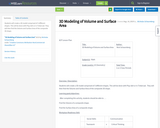
Students will create a 3D model comprised of 3 different shapes. This will be done with Play-doh or in Tinkercad. They will then find the Volume and Surface Area of the composite 3D shape.

Students will create a 3D model comprised of 3 different shapes. This will be done with Play-doh or in Tinkercad. They will then find the Volume and Surface Area of the composite 3D shape.
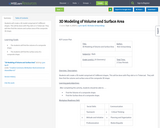
Students will create a 3D model comprised of 3 different shapes. This will be done with Play-doh or in Tinkercad. They will then find the volume and surface area of the composite 3D shape.
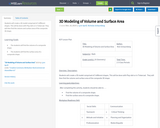
Students will create a 3D model comprised of 3 different shapes. This will be done with Play-doh or in Tinkercad. They will then find the volume and surface area of the composite 3D shape.

This class investigates the use of computers in architectural design and construction. It begins with a pre-prepared design computer model, which is used for testing and process investigation in construction. It then explores the process of construction from all sides of the practice: detail design, structural design, and both legal and computational issues.
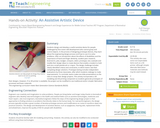
Students design and develop a useful assistive device for people challenged by fine motor skill development who cannot grasp and control objects. In the process of designing prototype devices, they learn about the engineering design process and how to use it to solve problems. After an introduction about the effects of disabilities and the importance of hand and finger dexterity, student pairs research, brainstorm, plan, budget, compare, select, prototype, test, evaluate and modify their design ideas to create devices that enable a student to hold and use a small paintbrush or crayon. The design challenge includes clearly identified criteria and constraints, to which teams rate their competing design solutions. Prototype testing includes independent evaluations by three classmates, after which students redesign to make improvements. To conclude, teams make one-slide presentations to the class to recap their design projects. This activity incorporates a 3D modeling and 3D printing component as students generate prototypes of their designs. However, if no 3D printer is available, the project can be modified to use traditional and/or simpler fabrication processes and basic materials.
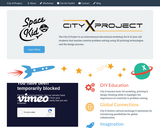
The City X Project is an international educational workshop for 8-12 year-old students that teaches creative problem solving using 3D printing technologies and the design process. This 6-10 hour workshop is designed for 3rd-6th grade classrooms but can be adapted to fit a variety of environments. Read a full overview of the experience here: http://www.cityxproject.com/workshop/
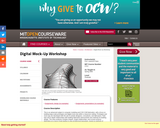
This is an advanced subject in computer modeling and CAD CAM fabrication, with a focus on building large-scale prototypes and digital mock-ups within a classroom setting. Prototypes and mock-ups are developed with the aid of outside designers, consultants, and fabricators. Field trips and in-depth relationships with building fabricators demonstrate new methods for building design. The class analyzes complex shapes, shape relationships, and curved surfaces fabrication at a macro scale leading to new architectural languages, based on methods of construction.

Subject applies cognitive science and technology to the industrial design process. Introduces prototyping techniques and approaches for objective evaluation as part of the design process. Students practice evaluating products with mechanical and electronic aspects. Evaluation process is applied to creating functioning smart product prototypes. Project oriented subject that draws upon engineering, aesthetic, and creative skills. Subject is geared towards students interested in creating physical products which encompass electronics and computers in order to include them in smart scenarios. Students present readings, learn prototyping skills, create a product prototype, and complete a publication style paper.
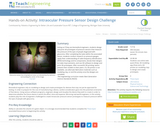
Acting as if they are biomedical engineers, students design and print 3D prototypes of pressure sensors that measure the pressure of the eyes of people diagnosed with glaucoma. After completing the tasks within the associated lesson, students conduct research on pressure gauges, apply their understanding of radio-frequency identification (RFID) technology and its components, iterate their designs to make improvements, and use 3D software to design and print 3D prototypes. After successful 3D printing, teams present their models to their peers. If a 3D printer is not available, use alternate fabrication materials such as modeling clay, or end the activity once the designs are complete.